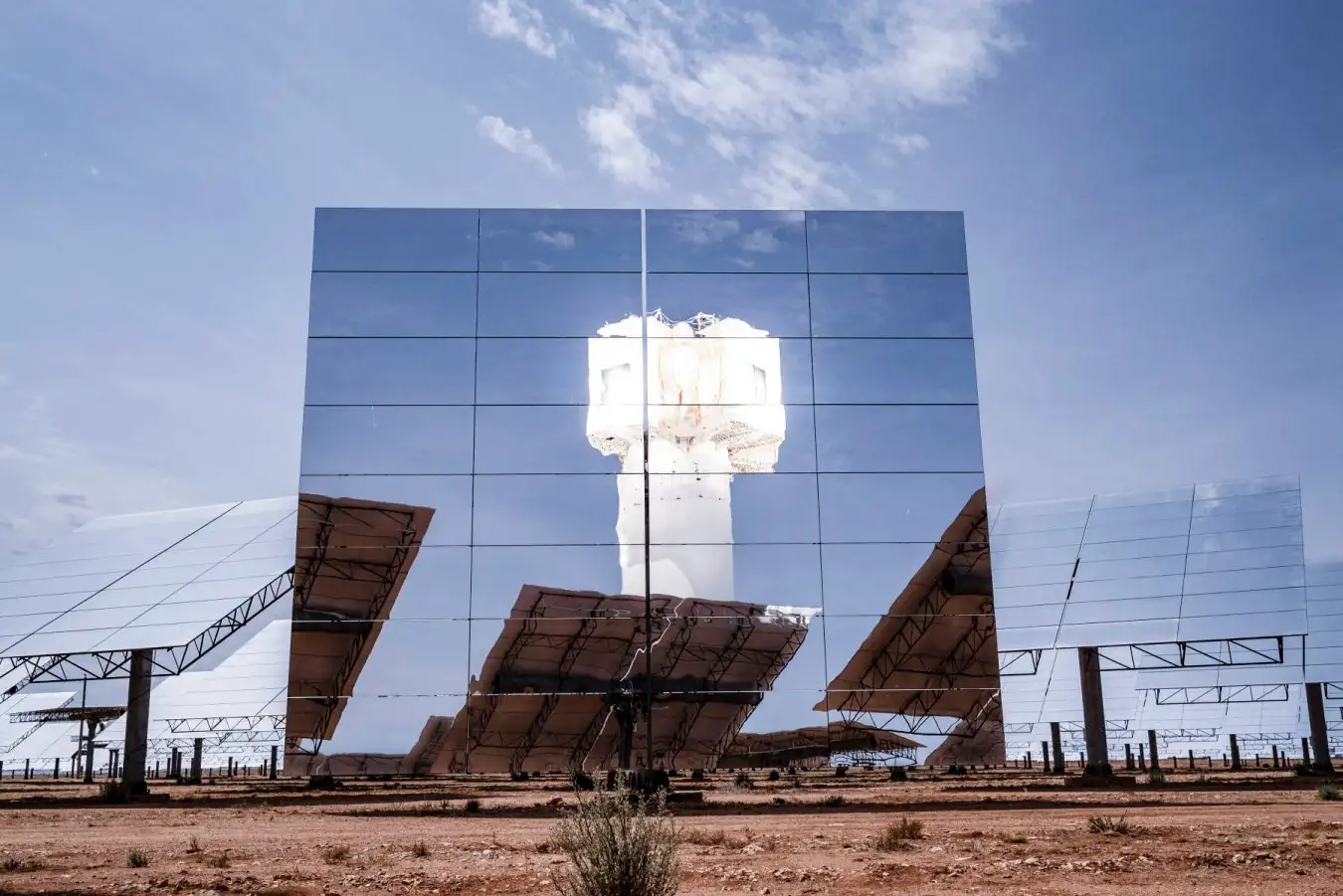
A solar power plant in South Africa – support for clean energy will be discussed at COP30
EMMANUEL CROSET/AFP via Getty Images
This year’s COP, kicking off on 10 November in Belém, Brazil, is unlikely to result in a major new international agreement for tackling climate change; instead, the focus will be on ironing out the details of how existing agreements will work.
Countries were meant to submit updated pledges for cutting emissions, known as nationally determined contributions (NDCs), ahead of the summit. Only 67 of the 195 Paris Agreement signatories had updated their plans by the end of October, with the European Union, which sets climate targets as a bloc, and India among the laggards. Meanwhile Donald Trump’s withdrawal from the Paris Agreement has effectively annulled the US targets submitted in December 2024 under Joe Biden.
On a more positive note, China has pledged to reduce net greenhouse gas emissions by 7 to 10 per cent from peak levels by 2035. Although insufficient to prevent the world warming by 2°C, it is a sign of progress as the country’s first absolute emissions reduction target. “It is a real leap forward from what we have seen in the past – we must see it as positive,” says Manuel Pulgar-Vidal, global leader of climate and energy at WWF.
Adapting to climate change
There are two big items on the agenda that could be important to both slowing climate change and preparing for it.
Brazil is pushing the Belém Action Mechanism for a Just Transition, a new initiative to reframe the world’s shift to clean energy as a source of jobs and growth rather than economic pain. The idea is to support countries as they transform specific sectors such as energy, mining or agriculture. It is expected to include pledges, targets and systems to clean up industries and channel funding to communities affected by the changes.
But with the reality of climate change biting, the focus of COP seems to be shifting towards adapting to climate change rather than stopping it. “COPs 1 to 29 happened in one climate reality and we are now in a new one. The immediate consequence is we have to make people safer,” says Laurie Laybourn of the climate think tank Strategic Climate Risks Initiative.
Another initiative, the Global Goal on Adaptation (GGA), is the first attempt to quantify and compare how vulnerable countries are to climate change. It is expected to include around 100 indicators, such as flood risk and food security. The GGA should help the world decide which countries are prioritised for funding, so it is a necessary step to unlocking finance for those facing the worst impacts.
But the world’s leaders must not get too caught up in adaptation at the expense of mitigation, Laybourn says. “There is a scenario where mitigation is pushed onto the back foot but that is a dead end, as less mitigation means more adaptation needs, and we will become stuck in a doom loop.”
Fixing the finance gap
With wealthy nations failing to deliver the finance required to help developing economies adapt to and prevent climate change, Brazil hopes to get financing back on track with the Baku to Belém Roadmap. The aim is to scale up global climate finance to $1.3 trillion per year by 2035.
Low-income countries are pushing for grants from the wealthier nations whose high emissions are slowly pushing them underwater or killing their crops. Wealthier countries will be trying to find the money through private investment, debt swaps, development bank funding or innovative financing initiatives such as the Tropical Forests Forever Facility (TFFF).
The TFFF is expected to be officially launched at COP30 to finance forest protection through private investment. Brazil and other nations will guarantee the fund with an initial investment so it can then borrow around $100 billion from large private investors at a low interest rate. The TFFF will then reinvest that borrowed money into sustainable projects with higher returns and pay the profits directly to nations that protect their forests.
Brazil has already invested the first billion dollars, and the World Bank announced in late October it would host the fund. The TFFF could be a new self-sustainable conservation model that generates $4 billion a year to protect the world’s shrinking forests.
With few ambitious announcements expected at COP, there is growing pressure on the TFFF to be a success, but it will need nations to back it seriously, investing 10s of billions between them.
“The TFFF’s launch is likely to be a high point at a moment of troubled international climate negotiations and its success an important signal to others as we head into a severely climate-disrupted future”, says Simon Zadek at the Swiss climate finance consultancy Morphosis.
Topics:
Source link : https://www.newscientist.com/article/2502476-cop30-whats-on-the-agenda-at-the-belem-climate-summit/?utm_campaign=RSS%7CNSNS&utm_source=NSNS&utm_medium=RSS&utm_content=home
Author :
Publish date : 2025-11-05 08:00:00
Copyright for syndicated content belongs to the linked Source.






